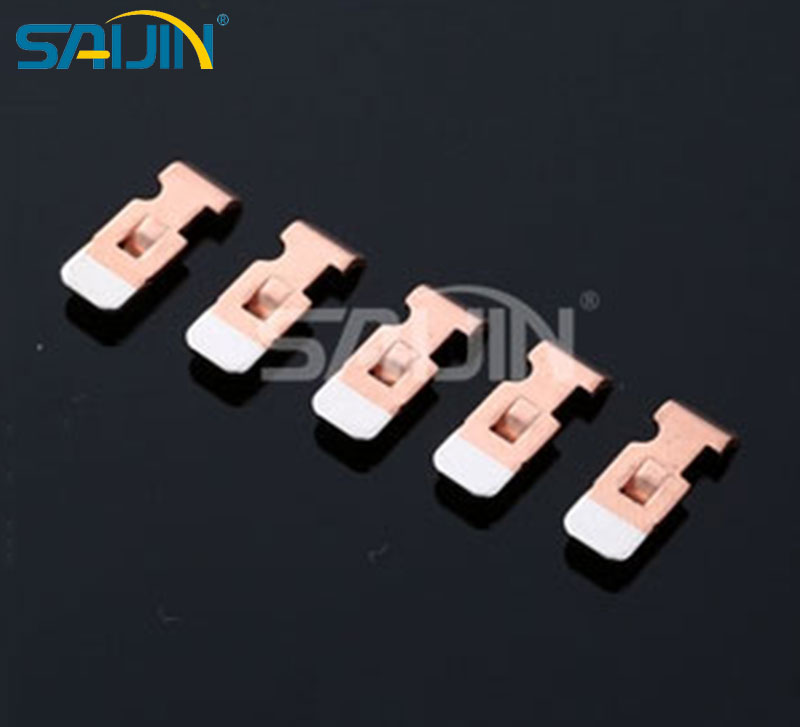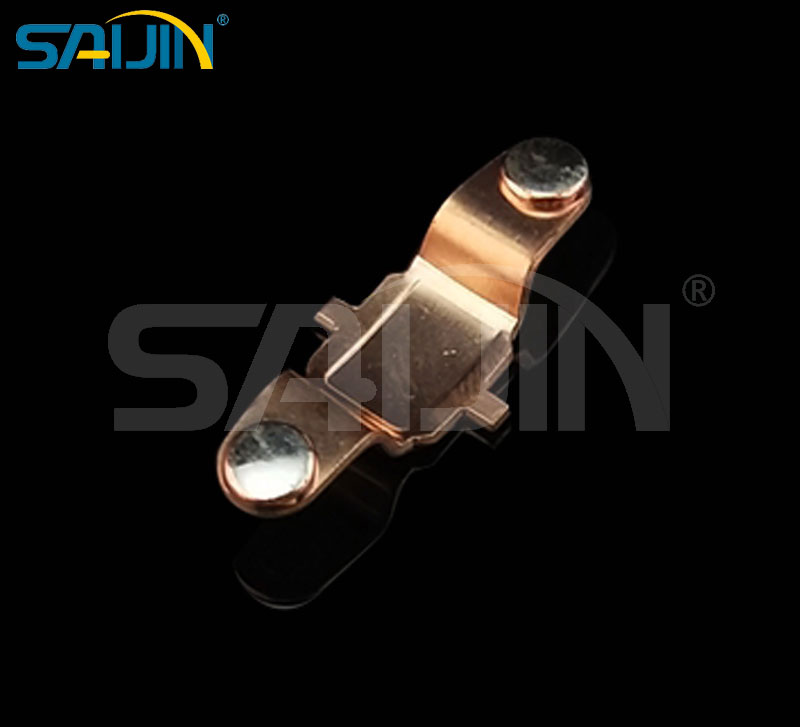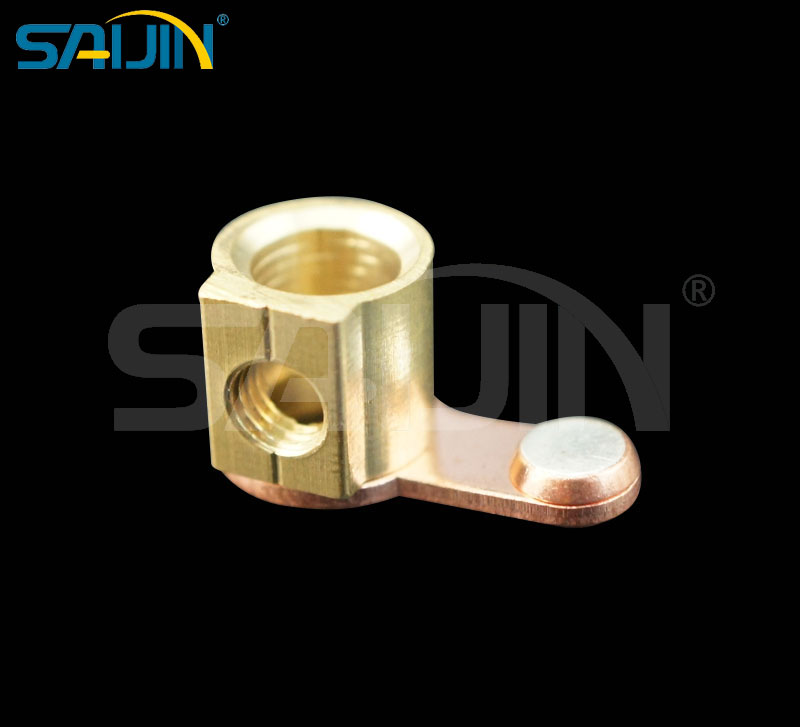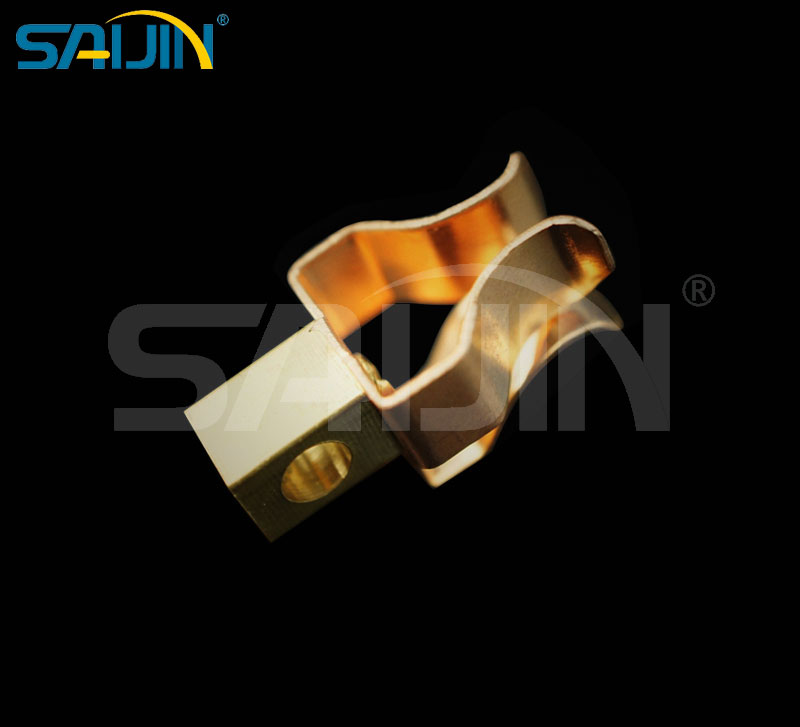What are the types of Electrical Contact Points?
Electrical contact points are the critical junctures where electrical current flows from one conductor to another. Their design, material, and construction significantly impact the performance, reliability, and lifespan of countless electrical and electronic devices – from simple switches in your home to complex relays in industrial machinery and automotive systems. Choosing the right type of contact point is essential for efficient power transfer, minimal signal loss, and resistance to wear, corrosion, and arcing. Here are the primary types:
1. Stamped and Formed Contacts:
Manufacturing: Created by punching and bending thin sheets or strips of metal (like copper alloys, brass, or phosphor bronze) using high-speed presses and precision dies.
Characteristics: Cost-effective for high-volume production, lightweight, allows for complex shapes (spring fingers, specific mating geometries). Often plated (tin, silver, gold) for enhanced conductivity and corrosion resistance.
Applications: Ubiquitous in connectors (board-to-board, wire-to-board, FFC/FPC), sockets, switches (especially smaller ones), relays (as the moving armature contact or stationary counterpart), fuse clips, and automotive components.
Pros: High production speed, low unit cost, design flexibility, good for medium currents.
Cons: Thinner material limits maximum current capacity compared to bulkier types. Performance heavily reliant on plating quality. Can be susceptible to deformation under extreme mechanical stress.
2. Solid Rivet Contacts:
Manufacturing: Pre-formed contact "heads" (often a high-performance material like silver alloy or tungsten) are mechanically riveted or staked onto a supporting base metal carrier (like copper or steel).
Characteristics: Provide a robust, wear-resistant contact surface where it matters most. The rivet head offers high durability and good conductivity, while the carrier provides structural support and often the electrical path to the terminal.
Applications: High-current switches (industrial, power tools, appliances), circuit breakers, high-power relays, automotive ignition switches, battery terminals. Used where significant mechanical wear or high currents are expected at the contact interface.
Pros: Durable contact surface, good heat dissipation from the contact point, handles higher currents than stamped contacts of similar size, cost-effective way to use expensive contact materials only where needed.
Cons: More complex assembly than stamped contacts. Potential point of failure is the rivet/carrier joint if not properly formed.
3. Machined Contacts:
Manufacturing: Precision contacts are created by cutting, milling, turning, or grinding solid metal bars or blocks (often high-conductivity copper alloys or specialized materials).
Characteristics: Offer the highest precision, superior surface finish, excellent structural integrity, and the ability to handle very high currents due to bulk material. Can be plated for enhanced performance.
Applications: High-power circuit breakers, high-voltage switches, heavy-duty industrial contactors, critical aerospace and defense connectors, high-precision test equipment sockets, high-reliability applications where exact geometry and maximum conductivity/durability are paramount.
Pros: Highest current capacity, best mechanical strength and dimensional stability, superior surface finish for low contact resistance, long lifespan under severe conditions.
Cons: Significantly higher cost due to material usage and slower machining processes. Less economical for high-volume, low-cost applications. Can be heavier.
4. Relay Contacts:
Function: This category is defined by its application (switching) rather than purely its manufacturing method. Relay contacts open and close circuits in response to a control signal (electromagnetic, solid-state, thermal, etc.). They are designed specifically for frequent making and breaking of electrical current.
Construction: Relay contacts can be any of the previous types (stamped, riveted, machined), chosen based on the relay's current/voltage rating and duty cycle. Common configurations include:
Single-Break: One moving contact touches one stationary contact.
Double-Break: One moving contact touches two stationary contacts simultaneously, breaking the circuit in two places (better for interrupting arcs).
Bifurcated: A moving contact with two fingers touches a single stationary contact (reduces contact resistance, improves reliability).
Characteristics: Designed for low contact resistance when closed, ability to withstand arcing during opening/closing, and resistance to welding. Materials are critical (see below).
Applications: Control circuits, automation, automotive ECUs, power switching, signal routing, safety interlocks. Found in electromagnetic relays, reed relays, contactors.
Pros: Enable isolation and control of circuits. Wide range of sizes and capabilities.
Cons: Subject to wear from arcing, contact bounce, potential for welding under fault conditions.
5. Materials for Electrical Contacts
The choice of material is as crucial as the contact design itself. Key properties include:
High Electrical Conductivity: Minimizes resistive heating and voltage drop.
High Thermal Conductivity: Helps dissipate heat generated at the contact point.
Hardness & Wear Resistance: Withstands mechanical erosion during mating cycles.
Corrosion Resistance: Maintains a low-resistance surface film.
Arc Erosion Resistance: Withstands damage from sparks/arcs during switching.
Resistance to Welding: Prevents contacts from fusing together under high current or fault conditions.
Common Materials & Alloys:
| Material | Key Properties | Typical Applications |
|---|---|---|
| Copper (Cu) | Excellent conductivity, good thermal conductivity, cheap. Prone to oxidation. | Busbars, base material for plating, high-current non-switching connections. |
| Brass | Harder than copper, better spring properties, cheaper than phosphor bronze. Lower conductivity. | Low-cost connectors, switch bodies, terminals. |
| Phosphor Bronze | Good spring properties, fatigue resistance, decent conductivity/corrosion resistance. | Connector contacts, switch springs, relay arms. |
| Beryllium Copper | Very high strength/springiness, excellent fatigue resistance, good conductivity. | High-reliability connectors, critical springs. |
| Silver (Ag) | Highest conductivity, excellent oxidation resistance (oxide is conductive), good thermal conductivity. Soft. | Plating, solid contacts in relays/switches, high-current joints. |
| Silver Alloys (e.g., AgCdO, AgSnO₂, AgNi) | Improved hardness, arc erosion resistance, and anti-welding compared to pure Ag. CdO being phased out. | Medium/heavy-duty relay/contactor contacts, switches. |
| Gold (Au) | Excellent corrosion resistance (no tarnish), very low contact resistance. Soft, expensive. | Low-current signal connectors, sensitive electronics, sliding contacts. |
| Tungsten (W) | Very high melting point, extreme hardness, excellent arc erosion resistance. Poor conductivity. | Heavy-duty circuit breaker contacts, high-arcing environments (often alloyed or as rivet tip). |
| Tungsten-Copper (WCu) | Compromise: Good arc/erosion resistance from W, better conductivity from Cu. | High-current interrupters, arcing contacts. |
| Palladium (Pd) & Alloys | Good corrosion resistance, harder than gold, lower cost than Pt. | Sliding contacts, connectors (alternative to gold). |
Conclusion
Understanding the different types of electrical contact points – stamped and formed, solid rivet, machined, and those specifically designed for relays – along with the critical role of materials, is fundamental for designing, selecting, and maintaining reliable electrical connections. Each type offers distinct advantages in terms of cost, performance, durability, and suitability for specific applications like static connections, high-current paths, or frequent switching. The right combination of contact design and material selection ensures efficient power transfer, signal integrity, and long-term operational reliability.




